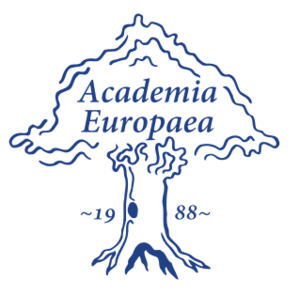Academia Europaea facts for kids
The Academia Europaea is a special group of smart people from all over Europe. They study many different subjects like history, languages, law, and science. This group started in 1988. Its main goal is to bring together experts from across Europe. They also help coordinate research ideas between different countries.
Contents
How the Academia Europaea Started
The idea for a "European Academy of Sciences" first came up in 1985. Science ministers from European countries met in Paris to discuss it. The Royal Society in the United Kingdom helped get things going.
In June 1986, a group of important scientists met in London. They included Arnold Burgen (UK), Hubert Curien (France), Umberto Colombo (Italy), David Magnusson (Sweden), Eugen Seibold (Germany), and Ruurd van Lieshout (Netherlands). They all agreed that a new European group was needed.
More meetings happened, and in December 1987, they chose the name Academia Europaea. This name was picked because it sounded good in many languages.
The first official meeting was in Cambridge in September 1988. Arnold Burgen became the first president. Hubert Curien, who was France's Minister of Science, gave a speech. He also made sure the French government supported the new academy.
By June 1989, the Academia Europaea had 627 members. The Royal Society helped the group financially at first. Over time, the Academia Europaea grew to include scholars from all across Europe. It gets money from different countries and other groups like the Leopoldina.
The Academia Europaea is also a member of the European Academies' Science Advisory Council.
What the Academia Europaea Does
The Academia Europaea has two main goals:
- To share the ideas and thoughts of individual scientists from Europe.
- To help connect European interests with national research groups.
It does not try to replace the science academies that already exist in each country. The group covers many subjects, including history, social sciences, and natural sciences. This helps different experts work together.
The Academia Europaea wants to:
- Show how important European learning and research are.
- Give advice to governments and international groups about science and learning in Europe.
- Encourage research that crosses different subjects and countries, especially on European topics.
- Find important topics for science and learning across Europe. Then, they suggest ways to study these topics well.
The Academy also tries to encourage high standards in learning, research, and education. It wants to help everyone understand the benefits of knowledge. It also explains how science affects society and our quality of life.
The Academia Europaea holds workshops and writes reports. For example, they have advised groups like the Council of Europe on topics such as education.
Leaders of the Academia Europaea
Here are the people who have been president of the Academia Europaea:
- Arnold Burgen (1988–1994)
- Hubert Curien (1994–1997)
- Stig Strömholm (1997–2002)
- Jürgen Mittelstraß (2002–2008)
- Lars Walløe (2008–2014)
- Sierd Cloetingh (2014–2021)
- Marja Makarow (2021-2024)
- Donald Bruce Dingwell (2025-)
How the Academia Europaea is Organized
The Academia Europaea organizes its work into different sections. When new members are chosen, they join one of these sections. There are twenty academic sections, covering many fields of study. Some examples include:
- Applied and Translational Biology
- Behavioural Sciences
- Chemical Sciences
- Earth and Cosmic Sciences
- Economics, Business and Management Sciences
- History & Archaeology
- Informatics
- Law
- Mathematics
- Physics and Engineering Sciences
- Social Sciences
The Academia Europaea chooses members from 47 countries that are part of the Council of Europe. These members are chosen because of their great achievements in their fields. Being elected is a big honor. Members can use the letters MAE after their name.
The Academia works with other groups like All European Academies and the European Academies Science Advisory Council. They are part of a bigger team called Science Advice for Policy by European Academies (SAPEA). SAPEA brings together experts from the Academia Europaea and over 100 national academies. Together, they give independent advice to the European Commissioners.
The Academia Europaea also acts as an official advisor to the European Union.
Images for kids
See also
 In Spanish: Academia Europæa para niños
In Spanish: Academia Europæa para niños



